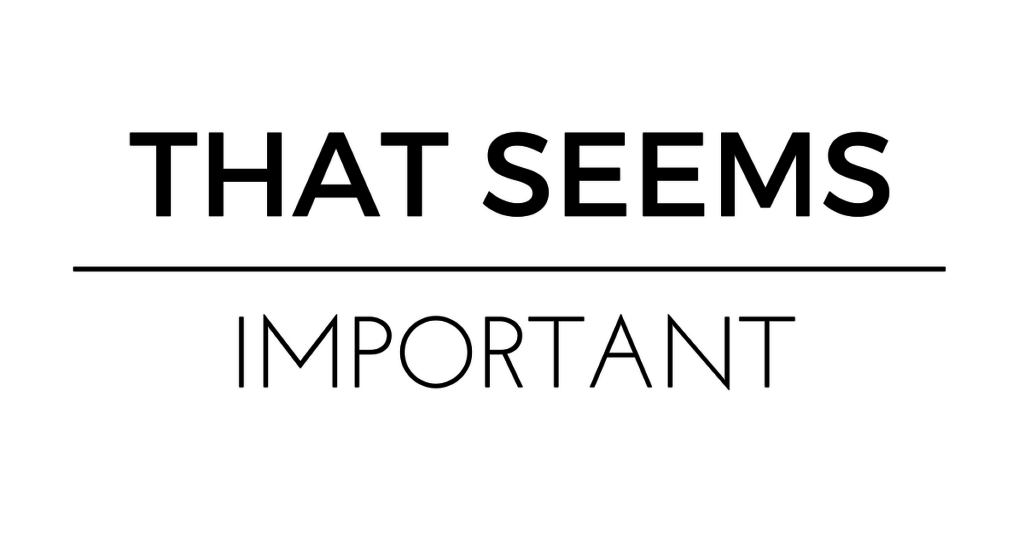When my friend Jake Jorgovan nudged me to write about why I shut down my virtual coworking community, The Arena, I thought he was out of his damn mind.
It’s sexy to walk away from a product that’s “working” when it’s making you a ton of cash. It’s not so sexy to write about shutting down a product when you’re in the trough of sorrow. Then you’re just a quitter. But not in the cool The Dip way, where you strategically quit things that don’t work. No, no. You’re the person who “doesn’t have what it takes.”
Or that’s what I was telling myself.
I built the Arena in 2017 on the hypothesis that I could lower the perceived risk of shipping by connecting solopreneurs, freelancers, and online businesses owners with more people like them. Having a tribe normalizes behavior and I wanted to normalize “doing things that might not work,” since that’s the only way you reliably get to things that do.
We started as an MVP and grew to a “proper” product within 6 months. I was getting gifts and thank you notes from paying customers for creating something that changed their lives. I doubled the price and still had a loyal following of core users. I’d built the thing people wanted! We were ready to FLY.
And then I shut it down.
Technically, it was working because we were profitable and that’s what my textbook says makes a “healthy working business.” Profit. Cash. Good margins.
Except it wasn’t.
Ths business was profitable. But wasn’t working.
Here’s why I shut it down:
1. Churn Fucking Blows
Despite having a loyal and passionate core group of customers, the fringes occupied all of my time and energy. It was like putting water in a leaky bucket. My profit never grew (much).
We used a subscription model to charge members a monthly, quarterly, or bi-yearly fee (we tested all three). No matter what I did, I kept hovering around the same number of customers. Every time I lost some, I gained a few more, but the net net was the same. Lose five, gain six. It wasn’t growing fast enough to make financial sense.
In the beginning, I told myself it was because I needed help. Or rather, people told me that’s what I needed and they weren’t wrong. But hiring help became a whole thing (see #3). And there were more problems than that. I needed 4x as many customers for it to make financial sense and even then, it wasn’t profitable enough to make sense for me personally.
That’s the funny thing about “profitable.” You can be “profitable,” but it still doesn’t make sense financially if those profits are…mediocre. When I looked at how much it cost (in time and money) to get one new Arena customer to cover churn – and compared it to my Skillshare course that had been running for half the time, it was a joke.
I did little to promote that course and it was growing all on its own. 901 students have completed that course. NINE HUNDRED AND ONE. I was killing myself to get 4 people into the Arena, while not losing 3 at the same time. And here this course was just growing on its own.
There’s a saying in marketing that once you figure out what’s working, keep doing that until it stops. Here I had something that was working (courses) and instead of doubling down on it, I was consumed with fixing this churn problem. Sisyphus has nothing on me.
2. When You Violate Your Boundaries You Can’t Get Them Back
I am very bad at boundaries. I love people and I love helping them. When I start to care about you, I throw ALL boundaries out the window. I answer all the emails, calls, texts, DMs, Voxes. You name it, I answer it.
Many of our customers became good friends and core parts of my own support system. This was something I didn’t anticipate. And I had a terrible time managing my time on our communication channels as a result.
I didn’t know how to invest in these relationships, while also protecting my time.
I was spending time in the weeds of community management, where I should have been growing the business. Worse, I was giving away advisory services I normally charge a premium for as a “benefit of membership.” I confused “caring about your customers” with “devaluing my time.”
I’d also told myself the (false) story that people needed me to be available. I intended to create a community where people connected with each other. But my behavior suggested that the value was in my showing up all the time.
The irony is customers actually told me in interviews, “No one cares about you. We want to hang out with each other.” But I didn’t listen.
I may have some fancy advanced degrees, but learning how to listen wasn’t in the curriculum.
3. Hiring Is Hard. Managing Is Harder.
I’d heard it before. Hire fast, fire fast. And I did literally the opposite.
Got it wrong multiple times and was devastated and embarrassed since members could tell and it impacted their experience. It also caused 3x more work for me AND cut into nearly all of my profits. The hires were supposed to help free up my time to grow. Instead, I chose the wrong people and managed them poorly.
You’re supposed to trust other people to do things, even if they don’t do them well.
I sucked at this. I’m an infinitely better manager now than I ever would have been, but there was an enormous cost to this lesson.
I spent the majority of my time either on-boarding people or off-boarding them and looking for the next one. All that took away from my time actually growing the Arena.
It became a Catch 22. To get myself out of the weeds and start focusing on promotion so we could grow, I needed to hire a Virtual Assistant (VA) to manage operations. But the money I need to get a GREAT VA with the tech skills I needed, cut into all my profits.
*Note: I got it right once. And that person was a godsend who came from within the community. There was a lesson there and I missed it because I wasn’t paying attention. When I looked at other businesses similar to mine, they all hired from within their tribe. PAY ATTENTION MARGO.
4. It’s Easy to Market Your Clients, It’s Hard To Market Yourself
I completely missed the mark with our messaging. The one thing I excel at for other people was extremely difficult for me to do for myself. Which is not surprising.
The reason this stuff is hard isn’t because the actual issues are complicated; it’s because it’s impossible to see the forest for the trees when you’re in it.
I had no idea I wasn’t being objective or was being driven by sunk costs. I thought I knew what was right and understood this better than anyone. I had frequent arguments with my team about it and was very stubborn, wanting to control ALL OF IT. I was an idiot.
I was attached to the original idea and did not follow the market. The market was more beginner than I wanted to admit and those people wanted COMMUNITY. Not content, not events, not me! They just wanted each other.
I thought I was solving the problem of “self-doubt,” but really I was solving the problem of “isolation.”
*Note: You’re not always the best person to write your own copy. I should have allowed my team to take the reigns here. They could see things I couldn’t. They could be objective where I wasn’t. My perfectionism and ego were getting in the way. This would have made a HUGE difference.
5. Focusing On Things No One Cares About Is Exhausting And Very Stupid
When I was beta testing the Arena, there was this guy, I thought, was the perfect candidate. When I accepted him into our beta membership, he was blunt: “So, wait…this is just a Slack channel? You don’t even have a membership portal?? I’m not paying premium for this.”
I was mortified. I thought the value was the community. But…was it *just* a Slack channel and some password-protected WordPress Pages? Did I need a proper portal to justify the investment? WAS THIS GUY RIGHT? AM I AN EMBARRASSMENT?!?
The answer, I decided, was yes. Plus, I needed something to help me manage memberships. So, I reinvested profits into building a custom membership portal. Shoestring budget…or so I thought? I didn’t account for the management of it. The multiple people I’d need to hire behind the scenes who would need to be a hybrid tech-genius and Slack-hawk to help me keep this thing up to date.
[For example, I made it someone’s job to stalk Slack conversation for all SaaS mentions and update the portal with new information on “useful tech tools,” just in case someone wanted access to this information, asap. These resources needed to be up to date and FAST. WE ARE PROFESSIONALS!]
I’d overlooked one tiny thing.
No one came here for content.
They came here for each other. My hunch was right in the first place. The entire thing could have been Zoom and Slack and our diehard members would have never noticed if there was nothing else. They DGAF about the “resources” available to them. Sure it was a nice selling point to have listed as a feature of our product. But NO ONE CARED.
No. One. Cared.
No members used the portal. Ever. EVER EVER EVER. Even for the video recordings of stuff they wanted. They preferred an unlisted YouTube link to having to log into something. No one likes logging into stuff! The more friction there is to complete an action, the less likely we are to do it. And I, the behavioral economics nerd, built a LOT of friction into the portal. GOOD JOB MARGO 👏🏼
This one insight would have saved me over a year of wasted time and energy.
Actually, let me rewrite that: Had I listened to my instincts and not let my insecurity about what I thought we needed to look like guide my decision making, the Arena might still be here.
6. Other Products Were Working Better, But I Wasn’t Paying Attention
Right about when we were hitting our stride, I got pregnant. The first trimester was terrible and I was a sick mess of a human who, on a good day, got 4 hours of work done. By the second trimester, I was up and running again and wasn’t planning to take much of a maternity leave; so I figured we were fine.
If you’re laughing, you’re right. After the baby showed up, my time was cut 50%. Fifty. Percent. Where I used to work a normal 12 hour day, I now had 6 hours tops. 8 hours of daycare meant that if I wanted to go to the gym or cook dinner, I had 6 hours to do “real work.” Trying to do work with a kid at home or “after they’re asleep,” is…HA. It’s cute you thought you could do that, Margo.
Anyway. I kept thinking “once I catch my stride again, I’ll have time to do all the things. This is just temporary.” Yeah, it wasn’t. You don’t suddenly get those hours back. This was my new normal and I needed to switch how I was spending that 6 hours.
When I audited how I was spending my time, I knew this business wasn’t sustainable for my new life as a parent.
I was spending all my time managing the Arena and when I wasn’t managing it, I was writing articles and emails. NO ONE WAS SPENDING TIME PROMOTING THE ARENA. The one area I’m qualified to be spending my time (promotion and growth), and where I wanted to be, I wasn’t.
I was doing literally everything else.
The Arena was a good business. It wasn’t a good business for me.
While all this was happening, my Skillshare course grew steadily and I was making a healthy profit on my writing workshops with 70% less work than it took to manage the Arena (and way more pleasure).
My dad used to say you should amplify your strengths (vs build up your weaknesses – don’t ignore them, but don’t waste time trying to be something you’re not. Spend your time doubling down on your strengths).
My strengths were staring me right in the face. My strengths were teaching and writing. Managing a hybrid SaaS-Serivce company wasn’t my zone of genius. And our profits were showing it.
Things that “shouldn’t be so hard” were because I wasn’t the right person to be leading this.
7. “I Don’t Want to Run This Business” Is A Good Enough Reason To Shut Something Down If You’re The Owner
I was SO afraid of letting the members down. I was afraid of what my husband would say when he saw me pivot again. Especially, when we were on the brink of growth and had a newborn. I was afraid of what all my colleagues would think since this was “technically” working. I was afraid of looking like I was “all over the place” and “had no idea what I was doing.” And starting over….again.
And, tbh, I did let people down and I did get judged as all those things.
It sucks to be at the top of your game in many respects and then have to pause and go, “this isn’t working.”
People whispering, “What is she up do? What does she actually do?” was my biggest fear. I think it’s all creative entrepreneurs’ fear because at our heart we’re just trying to make our art make money.
What scared me most, though, was the fear of waking up in 20 years having built a business and life I hated. Staying put, even for the promise of future profit, wasn’t worth it if it meant I’d resent my kid or that I’d model behavior I didn’t want her to see.
I wasn’t going to let that happen. Even if it meant taking a short term hit, eating a slice of humble pie, and walking straight into the unknown.
There’s The Business You Can Run and The Business You Should. Which One Is This?
Shutting down the Arena was what I needed to do. And in the end, my tribe respected me for it. I got letters from nearly every member about how our product changed their life and business.
It succeeded in the thing I actually cared about: Making a difference.
Which, ironically, made it harder. As elated as I was, I was nervous that I was “being dumb” for shutting down something that was working…but “working” is relative. It wasn’t working, by my definition.
The mental torment about what it means to be a “responsible” business owner took up the majority of my brain space. I’m still not sure if I am a responsible business owner. I’m a writer and teacher who found an opportunity to help people and make something. Something I hope to have the privilege of doing again.
This model triggered my perfectionism, over-involvement, and (the worst) trying too hard. The members knew it and I knew it. Only, there was no way for me to stop the train once it left the station.
A few weeks ago I spoke with my friend, Paul Jarvis about Product/Founder fit (I’ll link when the podcast comes out). Product/Founder fit is that is the sweet spot between your strengths and the business model you choose for your company. We’re all consumed with finding product/market fit, but we don’t stop to think about product/founder fit. Are you the right person to run this business?
For a lot of us, we are smart, capable, and we are insane perfectionist top performers. We are good at whatever we set our mind to and that, IMO, is where we get into trouble. Willing something to work is not the same as it working. Being a competent top performer is often when keeps you from being honest with yourself about what you really want.
Just because you can, doesn’t mean you should.
For me, that meant being honest with myself that this wasn’t the kind of company I wanted to run. Not because I was an “entitled millennial who doesn’t understand hard work and is too soft to endure the trough of sorrow.”
But because I actually was in The Dip, quitting on the right thing in order to make way for something better.
Sign up to get new articles and product announcements from Margo




